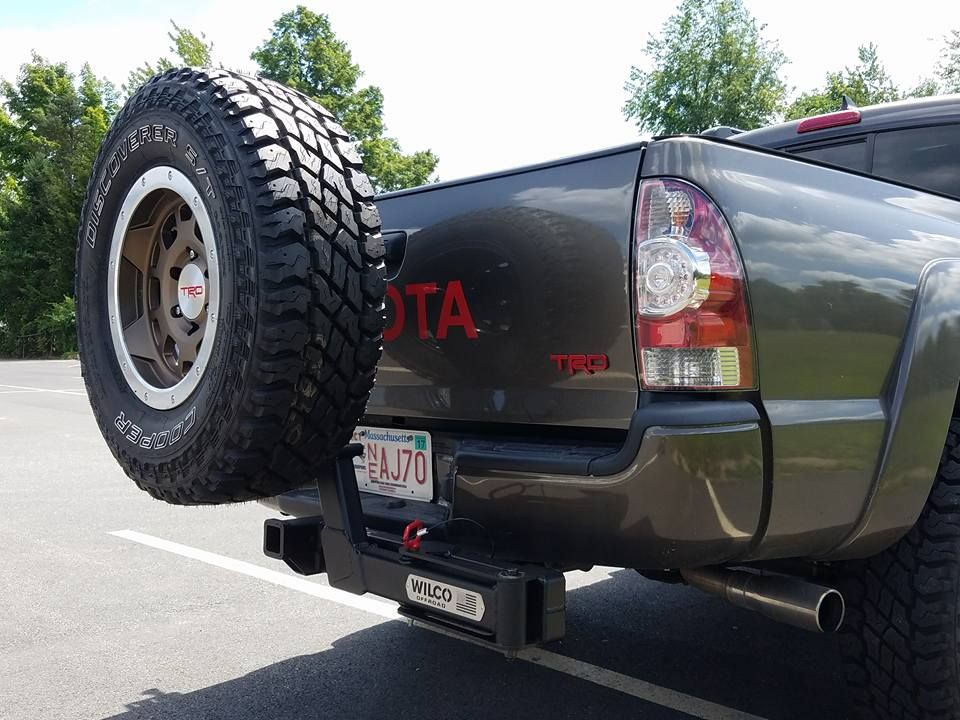Toyota Tacoma Owners Manual / When trouble arises / Steps to take in an emergency / If you have a flat tire
Remove the flat tire and replace it with the spare provided.
■ Before jacking up the vehicle
● Stop the vehicle on a hard, flat surface.
● Set the parking brake.
● Shift the shift lever to P (automatic transmission) or R (manual transmission).
● Stop the engine.
● Turn on the emergency flashers.
■ Location of the spare tire
■ Location of the jack and tools
Regular Cab models
Access Cab models
Double Cab models
Taking out the jack and tool bag
Regular Cab models with bench type seat
Pull the lever and fold down the seatback.
Regular Cab models with separated type seat
Pull the lever and fold down the seatback.
Unhook the strap and remove the tool bag.
Loosen and remove the jack.
1. Loosen
2. Tighten
Access Cab models
1.Pull up the lever.
2.Raise the bottom cushion up.
Turn the knob counterclockwise.
1.Open the lid.
2. Press the lid against the bottom of the lower cushion until it is supported by the hookand- loop fastener.
Make sure that the lid is supported to prevent it from closing unexpectedly.
Unhook the strap and remove the tool bag.
Loosen and remove the jack.
1. Loosen
2. Tighten
Double Cab models
Swing the bottom cushion up by pulling the lock release strap.
1. Turn the knob counterclockwise.
2. Open the lid.
Unhook the strap and remove the tool bag.
Loosen and remove the jack.
1. Loosen
2. Tighten
Assemble the jack handle (in the tool bag)
Assemble the jack handle extension as shown.
Taking out the spare tire
Insert the end of the jack handle extension into the lowering screw and turn
it counterclockwise.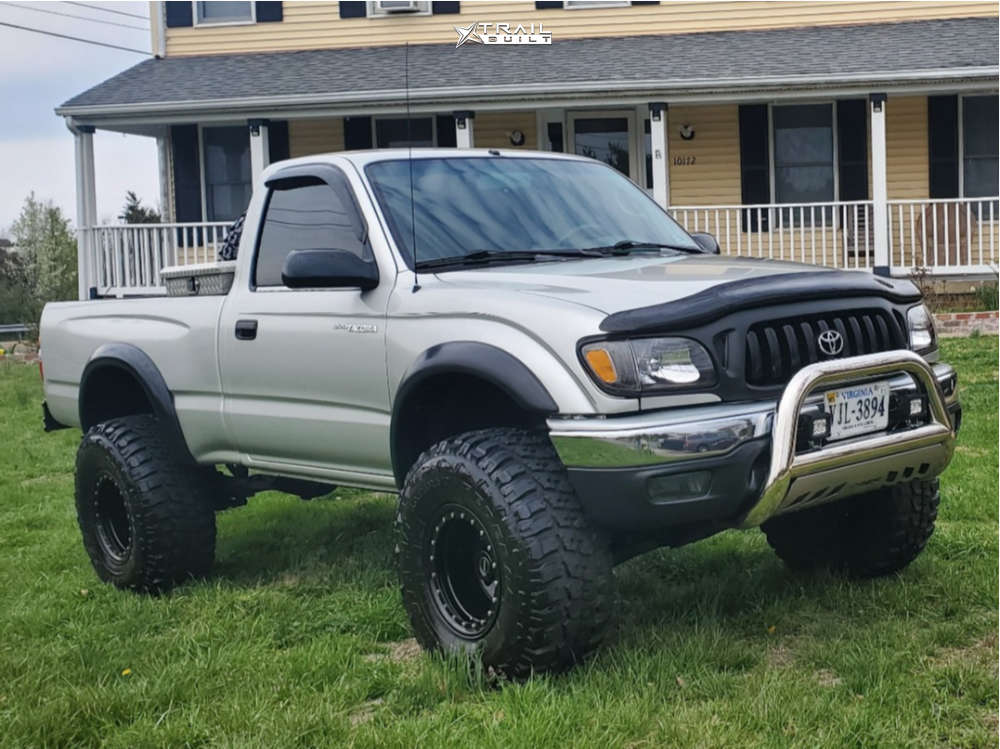
After the tire is lowered completely to the ground, remove the holding bracket.
Replacing a flat tire
Chock the tires.
Slightly loosen the wheel nuts (one turn).
Assemble the jack handle extension as shown.
Position the jack at the correct jack point as shown.
1. Front
2. Rear
Make sure the jack is positioned on a level and solid place.
Raise the vehicle until the tire is slightly raised off the ground.
When positioning the jack under the rear axle housing, make sure the groove on the top of the jack fits with the rear axle housing.
Remove all the wheel nuts and the tire.
When resting the tire on the ground, place the tire so that the wheel design faces up to avoid scratching the wheel surface.
Installing the tire
Remove any dirt or foreign matter from the wheel contact surface.
If foreign matter is on the wheel contact surface, the wheel nuts may loosen
while the vehicle is in motion, and the tire may come off the vehicle.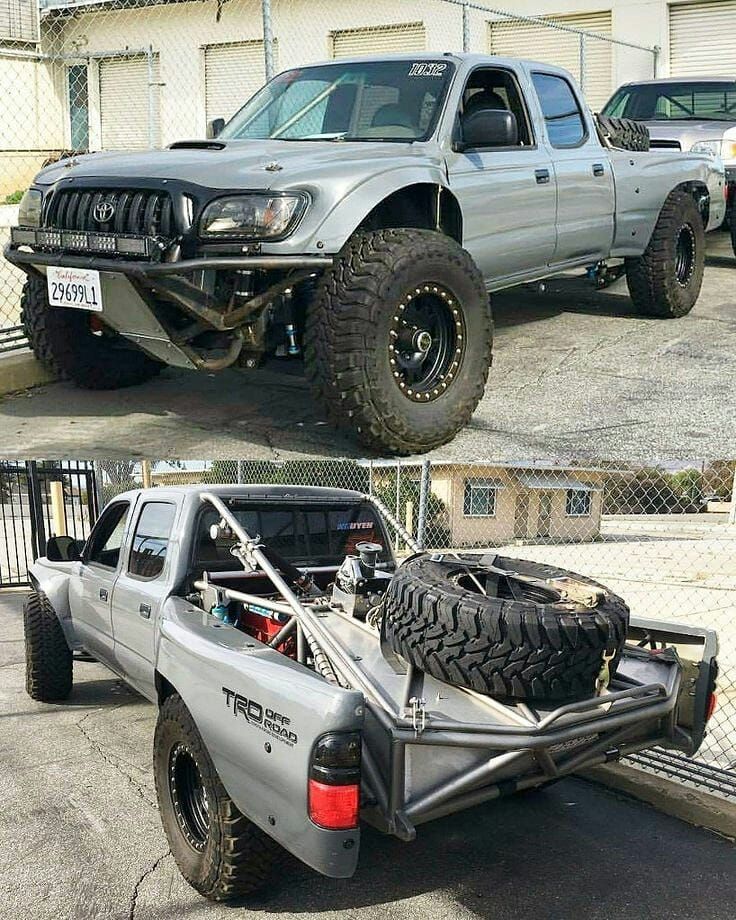
Install the tire and loosely tighten each wheel nut by hand by approximately the same amount.
Replacing a steel wheel with a steel wheel
Tighten the nuts until the tapered portion comes into loose contact with the disc wheel sheet.
Replacing an aluminum wheel with a steel wheel
Tighten the nuts until the tapered portion comes into loose contact with the disc wheel sheet.
Replacing an aluminum wheel with an aluminum wheel
Tighten the nuts until the washer of the nut comes into loose contact with the disc wheel.
Lower the vehicle.
Firmly tighten each nut two or three times in the order shown in the illustration.
Tightening torque: 83 ft·lbf (113 N·m, 11.5 kgf·m)
2WD models except PreRunner
4WD models and PreRunner
Stowing the flat tire, jack and all tool
Lay down the tire with the outer side facing up, and install the holding bracket.
4WD models only: Fasten the claws of the holding bracket into the wheel holes as shown in the illustration.
1. Holding bracket
2. Claw
Then secure the tire, taking care that the tire goes straight up without catching on any other part, to prevent it from flying forward during a collision or sudden braking.
Stow the tools and jack securely.
■After completing the tire change
The tire pressure warning system must be reset.
■When using the temporary spare tire
As the temporary spare tire is not equipped with the tire pressure warning valve and transmitter, low inflation pressure of the spare tire will not be warned. Also, if you replace the temporary spare tire after the tire pressure warning light comes on, the light remains on.
CAUTION
■Using the jack
Improper use of the jack may lead to death or serious injuries due to the vehicle
suddenly falling off the jack.
●Do not use the jack for any purpose other than replacing tires or installing and removing tire chains.
●Only use the jack that comes with this vehicle for replacing a flat tire.
Do not use it on other vehicles, and do not use other jacks for replacing tires on this vehicle.
●Always check that the jack is securely set to the jack point.
●Do not put any part of your body under the vehicle supported by a jack.
●Do not start or run the engine while your vehicle is supported by the jack.
●Do not raise the vehicle while someone is in it.
●When raising the vehicle, do not put an object on or under the jack.
●Do not raise the vehicle to a height greater than that required to replace the tire.
●Use a jack stand if it is necessary to get under the vehicle.
Take particular care when lowering the vehicle to ensure that no one working on or near the vehicle will be injured.
■Using the jack handle
Tighten all the screws securely to prevent the extension parts from coming apart
unexpectedly.
■Replacing a flat tire
●Observe the following precautions.
Failure to do so may result in serious injury: • Lower the spare tire completely to the ground before removing it from under the vehicle.
• Do not try to remove the wheel ornament by hand. Take due care in handling the ornament to avoid unexpected personal injury.
CAUTION
■Replacing a flat tire
• Do not touch the disc wheels or the area around the brakes immediately after the vehicle has been driven.
After the vehicle has been driven the disc wheels and the area around the brakes will be extremely hot. Touching these areas with hands, feet or other body parts while changing a tire, etc. may result in burns.
●Failure to follow these precautions could cause the wheel nuts to loosen and the tire to fall off, resulting in death or serious injury.
• Have the wheel nuts tightened with a torque wrench to 83 ft·lbf (113 N·m, 11. 5
kgf·m) as soon as possible after changing wheels.
5
kgf·m) as soon as possible after changing wheels.
• When installing a tire, only use wheel nuts that have been specifically designed for that wheel.
• If there are any cracks or deformations in the bolt screws, nut threads or bolt holes of the wheel, have the vehicle inspected by your Toyota dealer.
• Do not attach a heavily damaged wheel ornament, as it may fly off the wheel while the vehicle is moving.
• When installing the wheel nuts, be sure to install them with the tapered ends facing inward.
■When using the temporary spare tire
●Remember that your temporary spare tire is specifically designed for use with your vehicle. Do not use your temporary spare tire on another vehicle.
●Do not use two temporary spare tires simultaneously.
●Replace the temporary spare tire with a standard tire as soon as possible.
●Avoid sudden acceleration, deceleration and braking, as well as sharp cornering.
CAUTION
■Speed limit when using the temporary spare tire
Do not drive at speeds in excess of 50 mph (80 km/h) when a temporary spare tire
is installed on the vehicle.
The temporary spare tire is not designed for driving at high speeds. Failing to observe this precaution may lead to an accident causing death or serious injury.
■Driving with tire chains and the temporary spare tire
Do not fit tire chains to the temporary spare tire.
Tire chains may damage the vehicle body and adversely affect driving performance.
■When the spare tire is attached
The vehicle speed may not be correctly detected, and the following systems may not operate correctly: ●ABS & Brake assist
●VSC
●TRAC
●Active traction control system (if equipped)
●Hill-start assist control system (if equipped)
●Downhill assist control system (if equipped)
●AUTO LSD system
●Cruise control (if equipped)
Also, not only can the following system not be utilized fully, it may actually negatively effect the drive-train components: ●4WD system
NOTICE
■Do not drive the vehicle with a flat tire
Do not continue driving with a flat tire.
Driving even a short distance with a flat tire can damage the tire and the wheel beyond repair.
■When stowing the flat tire
Ensure that there is no object caught between the tire and the vehicle underbody.
■When replacing the tires
●When removing or fitting the wheels, tires or the tire pressure warning valve and transmitter, contact your Toyota dealer as the tire pressure warning valve and transmitter may be damaged if not handled correctly.
●Replace the grommets for the tire pressure warning valves and transmitters as well.
■To avoid damage to the tire pressure warning valves and transmitters
When a tire is repaired with liquid sealants, the tire pressure warning valve
and transmitter may not operate properly. If a liquid sealant is used, contact your
Toyota dealer or other qualified service shop as soon as possible. Make sure to
replace the tire pressure warning valve and transmitter when replacing the tire.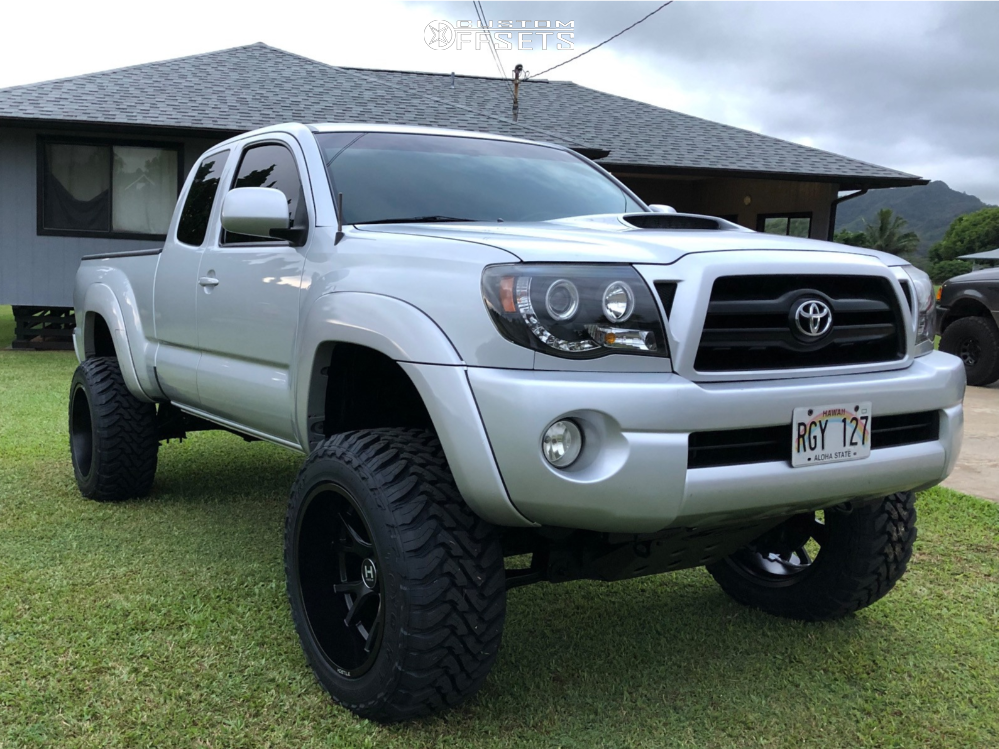
Calmly perform the following actions if any of the warning lights turn on or flash. If a light turns on or flashes, but then turns off, this does not necessarily indicate a malfunction in the syst ...
If the engine still does not start after following the correct starting procedure (→P. 141) or releasing the steering lock (→P. 142), confirm the following points. ■ The engine wi ...
Components
COMPONENTS
ILLUSTRATION
*1
INSTRUMENT LOWER PANEL ASSEMBLY
*2
INSTRUMENT PANEL LOWER CENTER FINISH PANEL
*3
NO. 2 INSTRUMENT PANEL GARNISH SUB-ASSEMBLY
*4
REAR NO.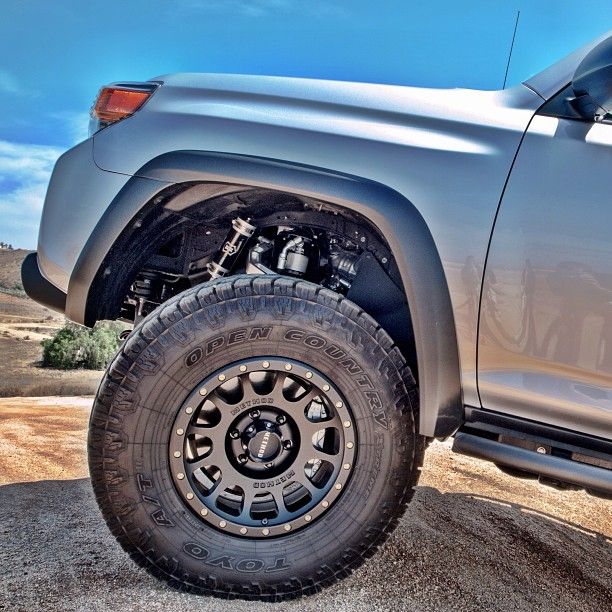 2 POWER WINDOW REGULATOR SWITCH ASSEMB ...
2 POWER WINDOW REGULATOR SWITCH ASSEMB ...
Pressure Control Solenoid "C" Circuit Open (P079513)
DESCRIPTION
Changing from 1st to 6th is performed by the ECM turning shift solenoid valves
SL1, SL2, SL3 and SL4 on and off. If an open or short circuit occurs in any of the
shift solenoid valves, the ECM controls the remaining normal shift solenoid valves
to allow the vehicle to be operated ...
Voice Recognition Microphone Disconnected (B1579)
DESCRIPTION
The radio and display receiver assembly and telephone microphone assembly are
connected to each other using the microphone connection detection signal lines.
This DTC is stored when a microphone connection detection signal line is disconnected.
DTC Code
DTC Det ...
Carrying a spare tire is a necessity.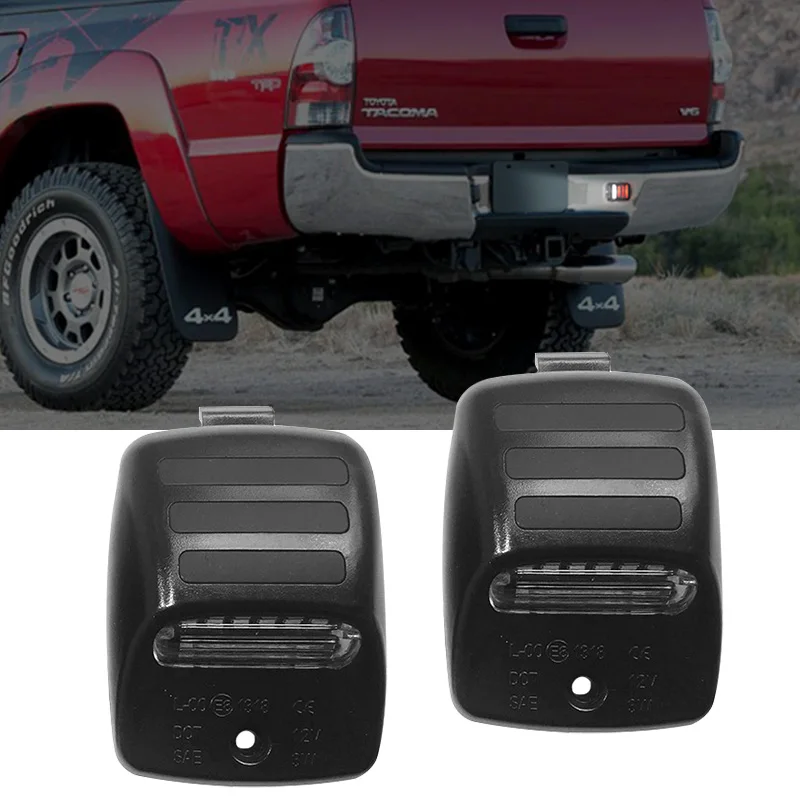 There’s nothing worse than being stranded on the side of the road or the trail with something as simple as a flat tire. If you keep your Tacoma completely stock, this obviously isn’t an issue – but for the guys who want to upgrade to bigger tires, what are your options?
There’s nothing worse than being stranded on the side of the road or the trail with something as simple as a flat tire. If you keep your Tacoma completely stock, this obviously isn’t an issue – but for the guys who want to upgrade to bigger tires, what are your options?
The second most popular question, next to fitting 33-inch tires on a 2nd Gen Tacoma, is whether or not you can fit a 33″ tire in the spare tire location. While there are other options to mounting a full-size spare, utilizing the stock mounting point makes your life easier and it’s cheaper than going with aftermarket parts.
Fitting a Spare on a 3rd Gen Tacoma?
A quick note. I think it’s worth mentioning that a 2nd & 3rd Gen Tacoma have many similarities. Several items, especially if we’re talking suspension or tires, can fit both trucks. While this guide is for the 2nd Gen, you can still learn something about this article’s subject even if you own a 3rd Gen. Just be mindful that minor differences between the generations mean that this entire post isn’t entirely relevant to the 3rd Gen but you can use it as a reference point.
Let’s see what it takes to get this common tire upgrade in the OEM spare location.
Table of Contents
If you upgrade to 285s from your stock tire size, you don’t necessarily need a full-size spare. However, we recommend one – especially if you go off-roading or travel long distances on the road.
Running a full-size spare is a good idea for a variety of reasons.
Let’s look at running different size tires if one of your tires blows.
If you blow a 33″ tire and have to run a factory 31″ spare, this will wear on your drivetrain, axles, and differentials, which of course, depends on how far you need to drive. If you have to drive a block down the street it’s not a big deal, but a 6-hour drive home from a trail can cause problems.
A differential is designed to turn the wheel/tire at different speeds, and on a 4wd truck without manual hubs, this means that front diff and axles are always spinning.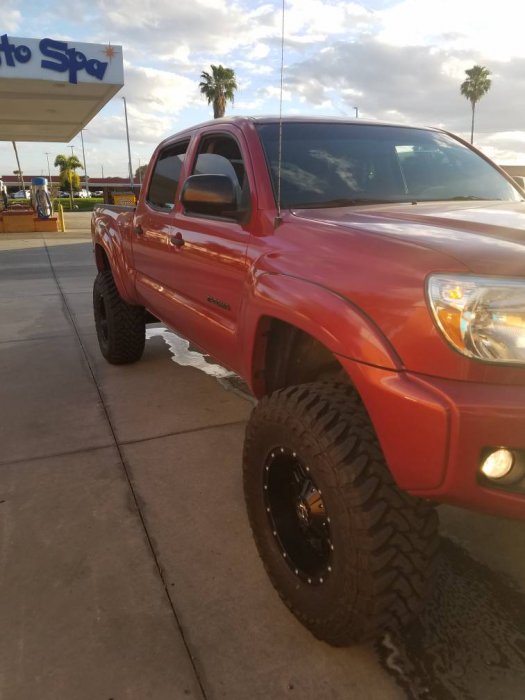 If you were to run two different size tires, this would definitely cause premature wear on your axles and diff.
If you were to run two different size tires, this would definitely cause premature wear on your axles and diff.
Another possible scenario where you would want a full-size spare is if something were to happen to a tire on the trail. Maybe you aired down too far and popped a bead, or got too close to a sharp rock and cut a large hole in your sidewall. Whatever the case, it’s super nice to be able to drive home on a full-size spare. Not to mention getting off the trail is going to be a lot easier.
Generally speaking, you should always carry a full-size spare tire!
Pictured: Bilstein 5100 2.8″ Lift Kit: Factory Wheels +30 offset on Yokohama Geolander 285/70R17 (33.1″)
Does a 33-inch tire fit the spare location on a Tacoma?
Yes, a 285/70R17 will fit the spare tire location. Our Yokohama Geolander 285/70R17 (33.1″) fit into the stock spare location with no modifications, however, it was tight.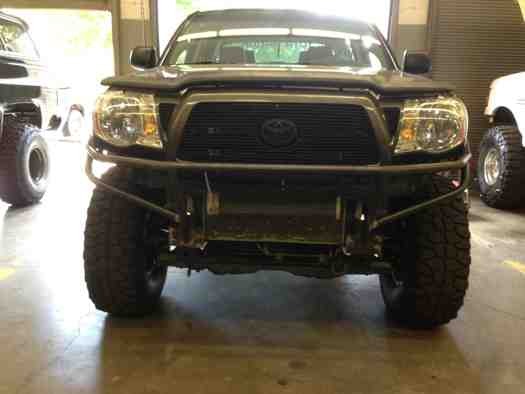 If you have a smaller size 33″ tire like a BFG KO2 (32.7″), you will likely have an easier time fitting a spare into place.
If you have a smaller size 33″ tire like a BFG KO2 (32.7″), you will likely have an easier time fitting a spare into place.
Our Yokohama Geolander 285/70R17 (33.1″) didn’t sit flush against the underside of the truck as the stock spare does. With a larger size 33″ tire like the Yokos, the tire will catch on the spare tire support brackets which prevents it from fully seating into place. This left us with a 1.5″ gap between the tire and where the tire typically sits flush. With that said, it’s definitely driveable and doesn’t hang down far enough to get caught up on anything. After driving around for a day, nothing shifted, and there were no noises coming from the back end, the spare tire was tight and secure.
Fitting other 33″ tires?
Keep in mind, not all 285s are the same size. Some 285s, and 33″ tires in general, measure small and others measure large.
If you’re running a BFG KO2 285/70R17 (32.7″) tire, for example, you may have an easier time fitting the whole tire as it’s a smaller diameter than the Yokohama Geolandar.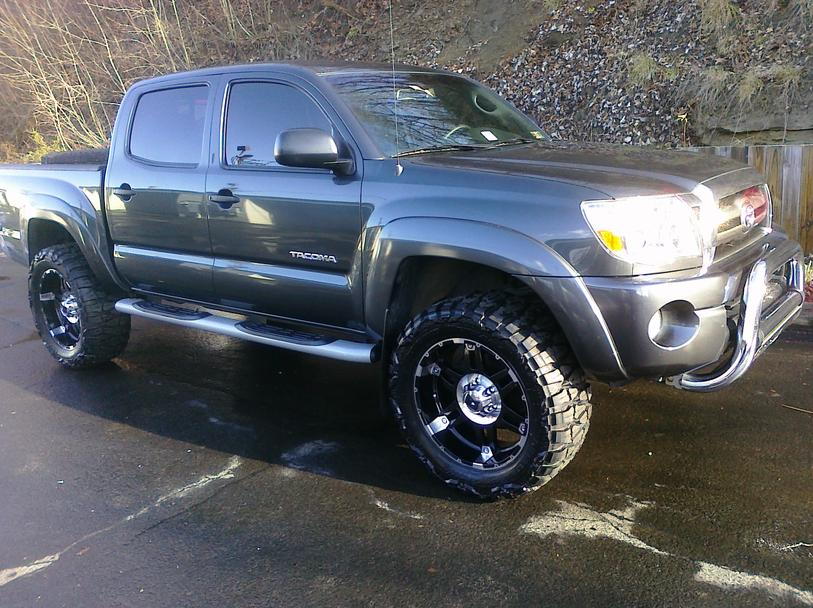 Additionally, a BFG KO2 285/75R17 (33.9″) has a much larger diameter overall as it has a taller sidewall and measures closer to a 34″ tire. Finally, there are some very small 285s like the AMP Tires Terrain Attacks sitting at 32.64″ which makes them one of the smallest 285s on the market.
Additionally, a BFG KO2 285/75R17 (33.9″) has a much larger diameter overall as it has a taller sidewall and measures closer to a 34″ tire. Finally, there are some very small 285s like the AMP Tires Terrain Attacks sitting at 32.64″ which makes them one of the smallest 285s on the market.
Just keep in mind when you are looking to fit a 285 tire that you pay attention to the actual tire size in exact inches, not just the standard measurement.
Tire Size Reference ( 285/70R17):
We didn’t know whether fitting the 285s would fit perfectly or if adjustments were needed at all. Before we aired the tire down (to stuff it up a little more), we were pretty surprised with how close it was to fitting.![]() It was tight but definitely doable. You can mount a 33″ spare up without adjustments and without airing the tire down.
It was tight but definitely doable. You can mount a 33″ spare up without adjustments and without airing the tire down.
Spare Tire Support Brackets
The full-size spare touches all 4 tire support brackets. The spare tire support brackets are designed to hold the spare in place at four corners. Because we literally let the air out of the tire, that allowed us to pull the tire further up into place. More on that below.
Keep in mind we didn’t mod these brackets at all for the spare 285/70R17 to fit. If you wanted to, you could definitely pound these support brackets with a large hammer in order to free up some space. Not to worry, pounding some brackets won’t compromise the truck or your safety.
Another spot the tire came very close to rubbing was the back of the hitch receiver. There isn’t a whole lot you can do to avoid the hitch receiver, which is why you may want to think of other tire mounting options for sizes bigger than 285/70R17. This is one area that you can’t simply “pound out”.
Again, if we didn’t air down, we would’ve had a hard time squeezing the tire past the receiver.
While it doesn’t technically contact the exhaust, the 285/70R17 spare was too close for comfort. If you were to go with any size larger than a 285/70R17 then you would definitely need to trim the exhaust back in order to clear that larger tire size. Which is something that many people do to help with overall clearance anyway.
Luckily there is a heat shield right here, which helps a lot, but regardless, you don’t want a tire touching that heat shield at all. With that said, if you go with any tire size over a 285/70R17 (285/75R17, 295/70R17, etc.), you will need to modify the exhaust section.
The axle is another spot that doesn’t actually touch the spare, but it’s close. If it were to rub on the diff then it could potentially cause a problem and limit your travel in the rear.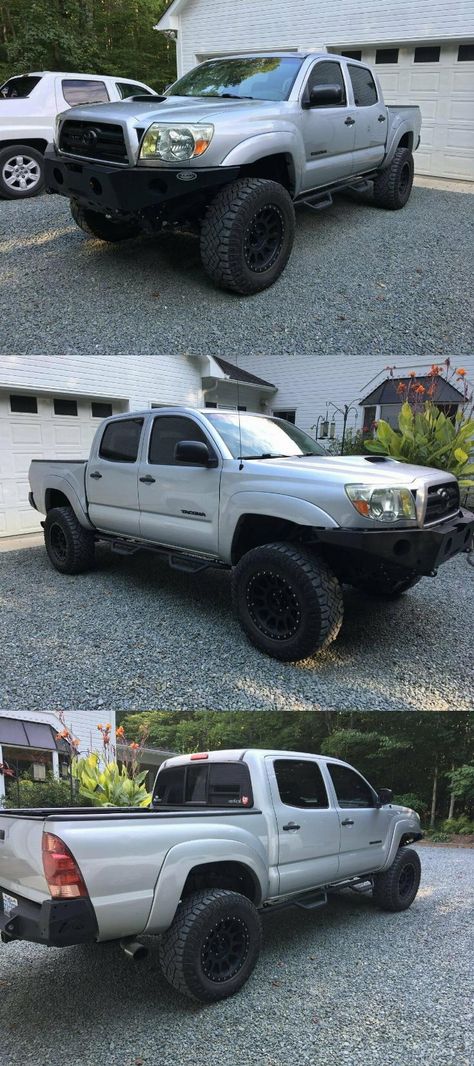
But just by looking at it, it seems like there is enough room to clear the tire at full bump (when the axle compresses all the way up towards the bed). However, if you were to go up a tire size, you would definitely run into some issues – especially with a short bed Tacoma (pictured here).
This rubbing spot is similar to the hitch receiver. Very very close to rubbing, and if you don’t air down your tire, you may have fitment issues. There isn’t a whole lot you can do to avoid rubbing here. Your only option would be to buy aftermarket leaf hangers. Pounding this hanger flat is a bad idea.
After testing everything, it did clear during articulation. If you were to go up a tire size (285/75R17, 295/70R17, etc.), you would have to get creative with the fitment.
We did air the spare down quite a bit in order to get it to fit as high as possible. The tire came back from the shop at 40 PSI so I aired it down 10 PSI and fit it up again.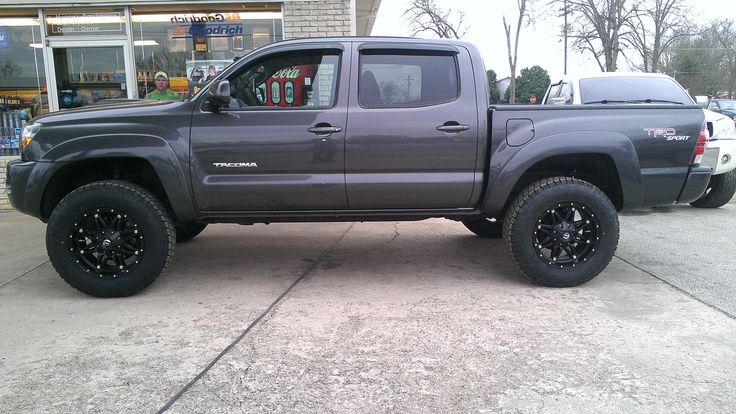 At 30 PSI, there wasn’t much of a difference from 40 PSI. The same thing for 20 PSI, it was headed in the right direction but it just wasn’t enough. I ended up going all the way down to 10 PSI and that seemed like it would work best in order to really pull the tire up into place, however, we’re not running a full-size 10 PSI spare just yet – at least not until we have onboard air like this ARB single motor compressor or a mobile one like this ARB twin motor compressor.
At 30 PSI, there wasn’t much of a difference from 40 PSI. The same thing for 20 PSI, it was headed in the right direction but it just wasn’t enough. I ended up going all the way down to 10 PSI and that seemed like it would work best in order to really pull the tire up into place, however, we’re not running a full-size 10 PSI spare just yet – at least not until we have onboard air like this ARB single motor compressor or a mobile one like this ARB twin motor compressor.
One of the things to consider before dropping the spare down to 10 PSI is whether or not you have a way to air it back up. Obviously, 10 PSI is way too low to drive on, which means if you don’t have a way to air it back up, essentially you don’t have a useable spare which defeats the whole purpose.
We aired the tire back up to 35 PSI and have the tire hanging just off the spare tire support brackets about 2″ from the top – where it usually rests in place.
After testing multiple PSI increments to see what made the biggest difference, we found that 10 PSI provided the most “stuff” but we don’t recommend running a spare with only 10 PSI. Just know this is an option and that you should air down your spare at your own risk.
Just know this is an option and that you should air down your spare at your own risk.
The only thing we did to get the spare tire to fit best is air it down. That’s it. Now if you wanted to make it fit better or fit an even bigger tire down there, you could do some slight modification to make it work.
Spare Tire Support Brackets
The easiest way to make some extra room on the stock brackets is to hit them with a big hammer. This could make more to mount a bigger tire and wouldn’t affect the drivability or safety of your truck in any way.
Hitch Receiver
Unfortunately, you can’t hammer back the hitch receiver. Really, the only alternative is to remove it or find an aftermarket one that gives you more clearance on the back of the spare. Or you save yourself a headache and put the spare tire elsewhere.
Exhaust
The exhaust would be pretty easy to mod.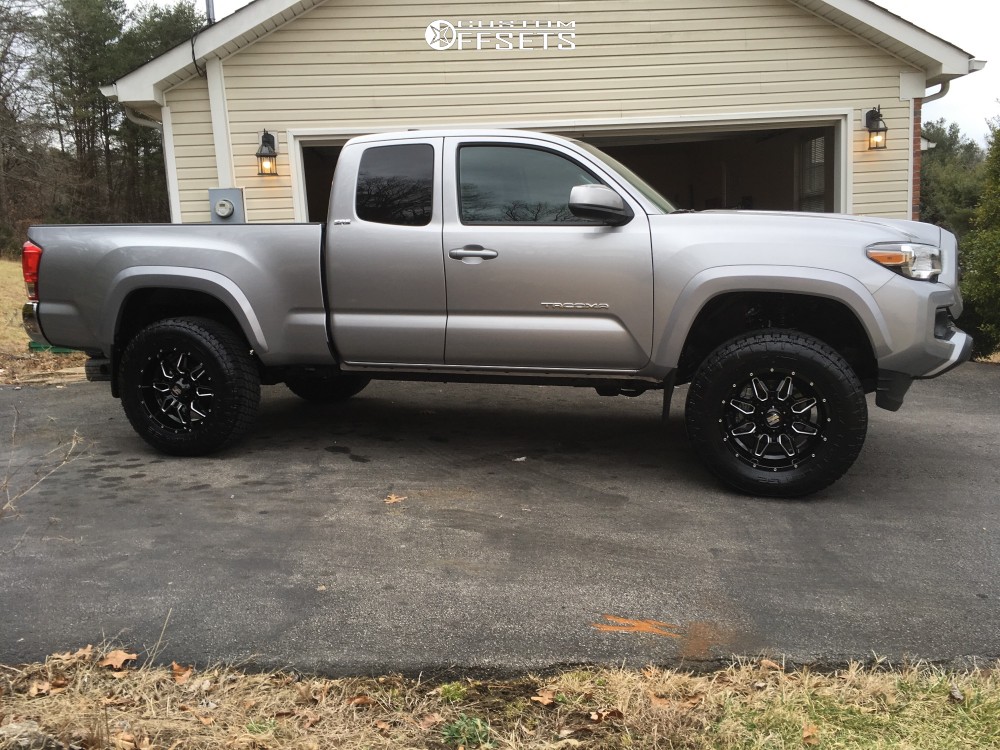 Just cut it back close to the axle and call it a day. I recommend cutting it right after an exhaust hanger to ensure that there is no rattling afterward. Another option would be to add a more heavy-duty heat shield in place of the stock one to prevent the tire from getting too hot.
Just cut it back close to the axle and call it a day. I recommend cutting it right after an exhaust hanger to ensure that there is no rattling afterward. Another option would be to add a more heavy-duty heat shield in place of the stock one to prevent the tire from getting too hot.
As far as modding the leaf hanger and axle goes, there isn’t a whole lot you can do to clear them other than airing the spare tire down. If you have a long bed, you should definitely be clear of the axle and possibly the leaf spring hangers as well since the axle would be further away from the back of the truck.
If you don’t want to deal with stuffing your spare 285 in the stock location, don’t sweat it. There are plenty of other options that allow you to carry your full-size spare with you everywhere you go.
If you don’t use your bed that often, you could just throw it back there. The downside to that is it’s easier to steal and it takes up a majority of your bed space.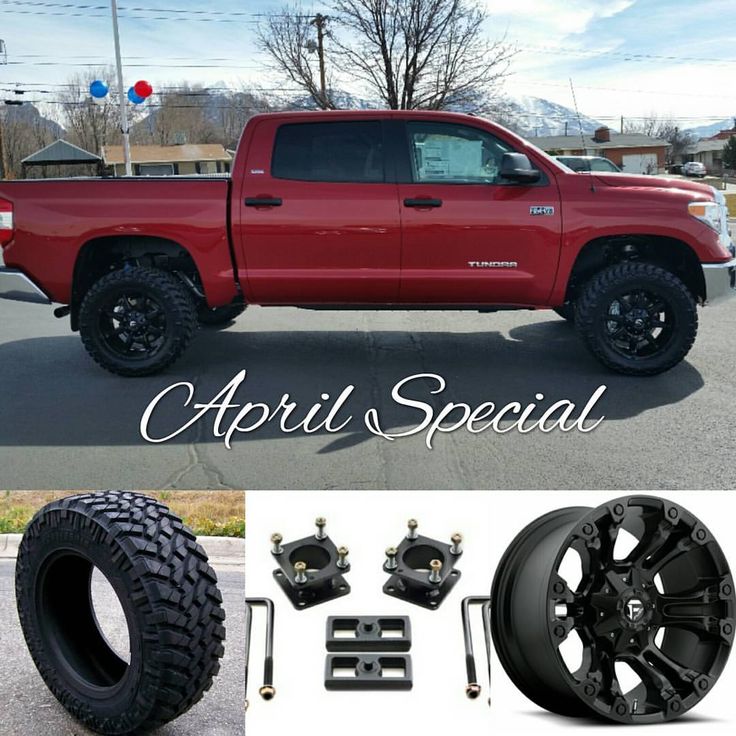 Additionally, you could buy some sort of bed rack/tire carrier designed for the bed. Check out the Universal Wilco Bed Rail Tire Carrier. This would help save some space and make it harder to steal.
Additionally, you could buy some sort of bed rack/tire carrier designed for the bed. Check out the Universal Wilco Bed Rail Tire Carrier. This would help save some space and make it harder to steal.
The most expensive option would be to buy a rear bumper swingout. Not only does this option give you more protection, but it allows you to fit basically any sized spare tire you want. Another cool option, that’s less expensive than a full bumper, is the RIGd UltraSwing.
As I mentioned before, fitting a spare 285/70R17 was fairly easy, but super tight on space. If you were to go with a bigger size than a 33″ tire, you would have to get creative with mounting it in the spare location. This doesn’t mean it’s impossible to fit anything bigger down there, just more difficult and time-consuming. At that point, it might be easier to find another spare mounting solution.
It would definitely require some sort of modification to have a bigger tire fit comfortably.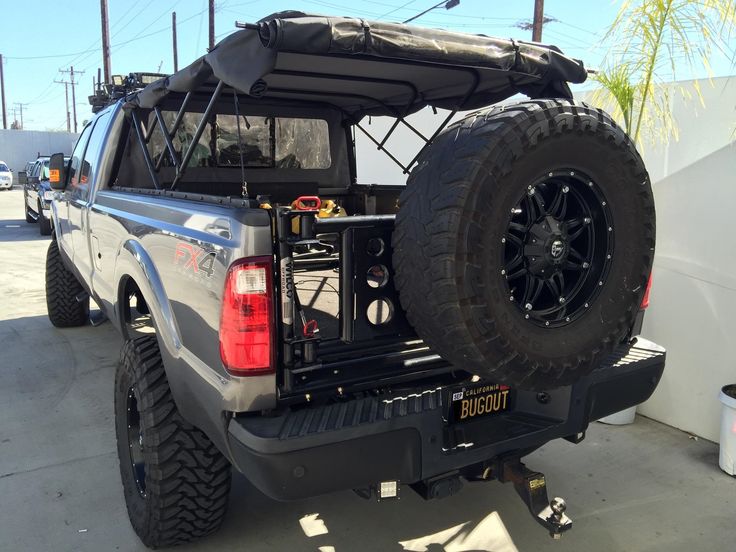 Obviously, the bigger the tire, the more modding it will take to make it fit.
Obviously, the bigger the tire, the more modding it will take to make it fit.
At the end of the day, it’s pretty nice knowing we can fit a 285 in the spare location. If you are considering jumping up to 33s, I would definitely consider getting 5 of them.
Even if you already have 33s, then there’s no harm in getting one more to match. Even if you can find a used 33, running one of those would be much better than one that’s a different size.
Passenger Front
Driver Front
Front
Side Close
Passenger Rear
Full Side Profile:
Since the spare wheel is located under the floor of the car in a Land Cruiser, the owners of this car find it difficult when it is necessary to remove the spare wheel on a Land Cruiser 200 or 100.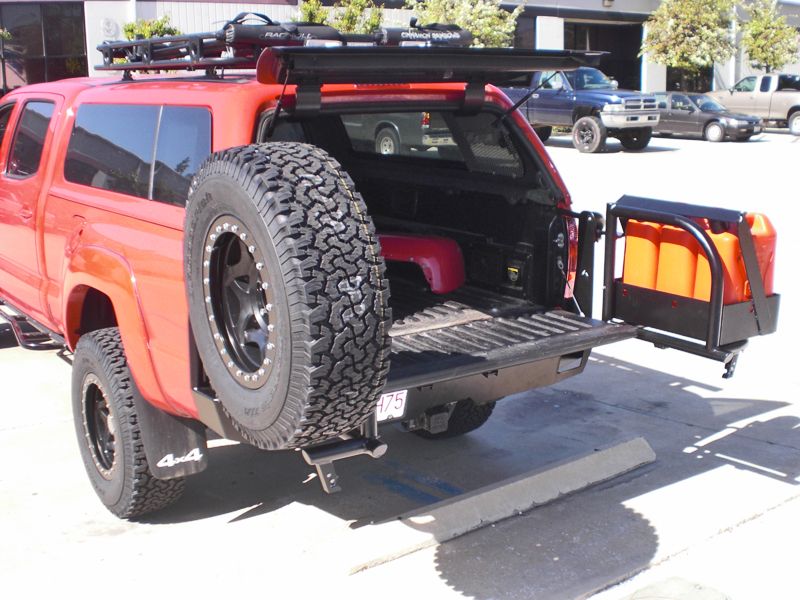 On most cars, it is located in the luggage hole , but in this Japanese it is located differently. Manufacturers have installed a separate design for lowering the spares of their brainchildren, the development of which causes problems.
On most cars, it is located in the luggage hole , but in this Japanese it is located differently. Manufacturers have installed a separate design for lowering the spares of their brainchildren, the development of which causes problems.
Contents of the article:
To remove the spare wheel on a Toyota Land Cruiser 100, you need to do the following:
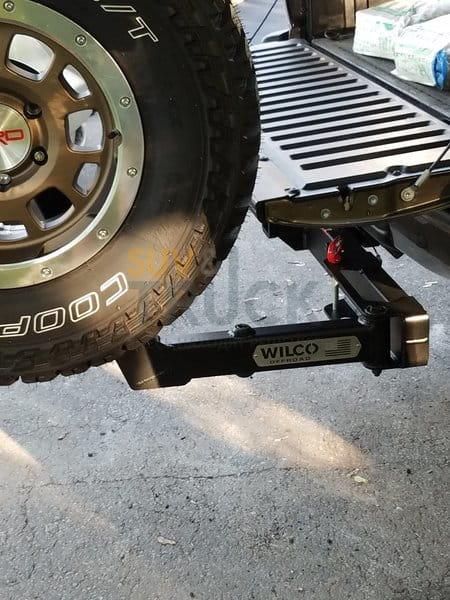
To install the removed spare wheel into the storage space, follow the described manipulations in reverse order.
For clarity, you can watch a video of the process of how to remove the spare tire on the Land Cruiser 200. It is not necessary to look for a video with a specific SUV model, since the device for lowering the spare tire is identical on TLK vehicles from 80 to 200.
The spare wheel lock is designed to prevent theft of the spare wheel. But it happens that the owner of the car cannot remove the spare tire on the Land Cruiser and needs to remove the protection. The reasons for this are:
The lock can be removed with a flat screwdriver. To do this, pry the pin with a screwdriver at such an angle that pressure is applied to it.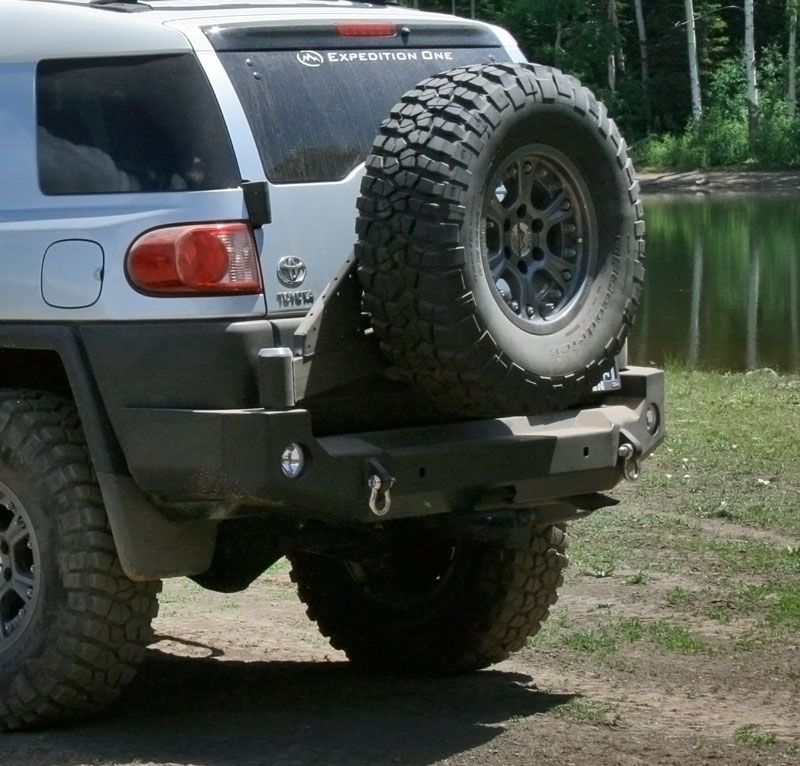 Then use the tool as a lever and, with an effort, break out and remove the mechanism blocker.
Then use the tool as a lever and, with an effort, break out and remove the mechanism blocker.
As a preventive measure, the spare wheel mounting must be tested for serviceability. To do this, you need to make sure that the mechanism for raising the spare wheel is working. Frequency - 1-2 times a year.
To prevent rust and protect against moisture, the winch is painted, disassembled and lubricated with special equipment. This allows you to remove the spare wheel on the Kruzak 200 at any time without hassle.
Oxidation of the spare wheel mounting mechanism is the cause of its failure. The emergence of a problem reveals the importance of prevention. But if a breakdown does occur, you need to know what means and measures to take to restore performance.
On car forums, Kruzak owners give several ways to get out of this situation:
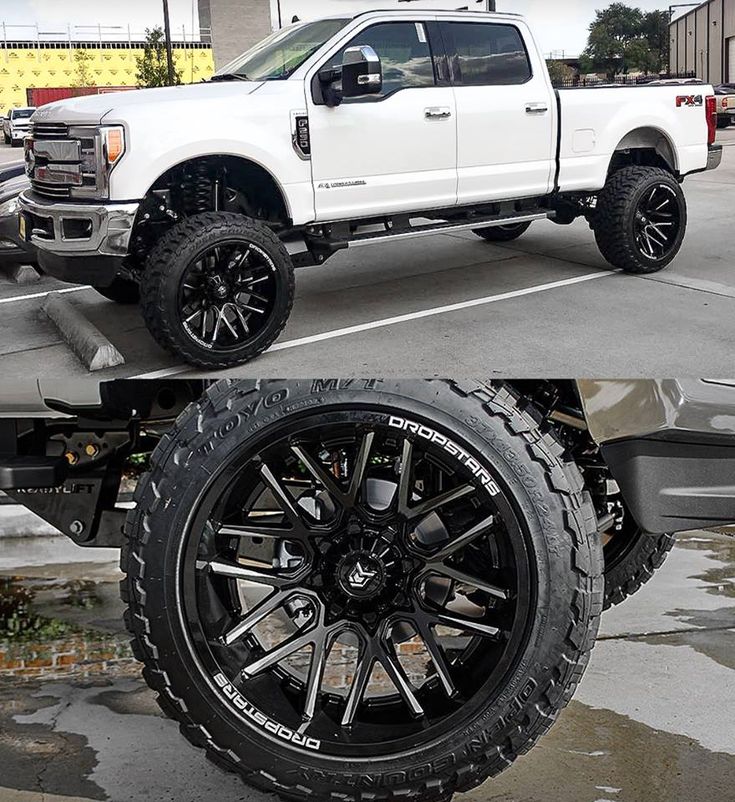 The method is inefficient, since when using these products and getting dirt, a compound is formed that prevents the mechanism from working.
The method is inefficient, since when using these products and getting dirt, a compound is formed that prevents the mechanism from working. The solution to the nitrous problem is only a cleaning agent containing molybdenum.
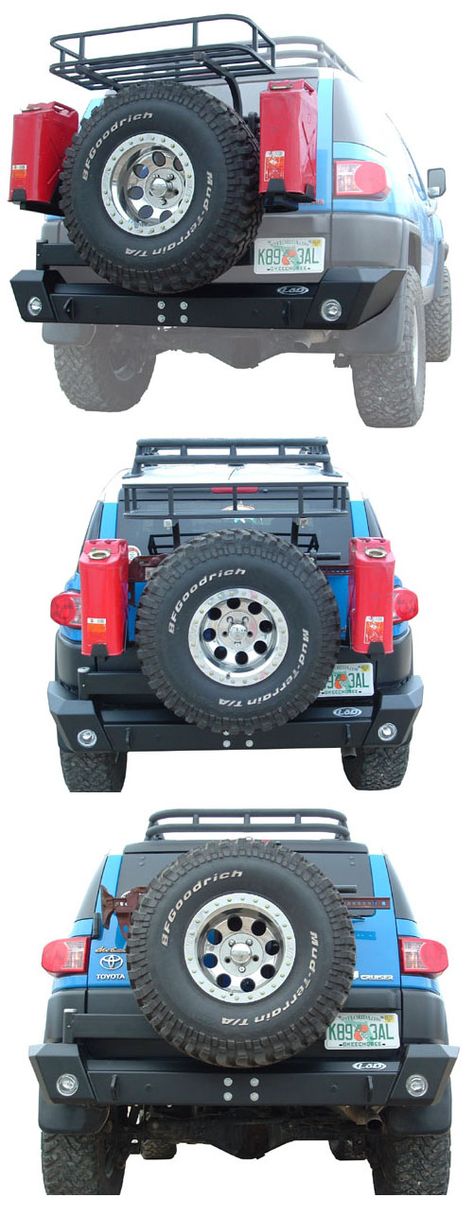
In addition to removing rust, it forms a molybdenum film when applied, which protects the metal from moisture and re-corrosion.
Motorists explain the unusual location of the spare wheel in the TLC:
But with the advent of skill, removing the spare tire on the Land Cruiser 100 is not difficult. Toyota is an expensive and prestigious SUV that, like any car, needs care. Therefore, you should not save on consumables - cleaning and lubricants, as well as preventive maintenance. So the car will last a long time and will 100% justify its high price and reputation as a reliable vehicle.
Deniska
I also have just got this car and find it fantastic except i cannot get the key fob to close or open the windows.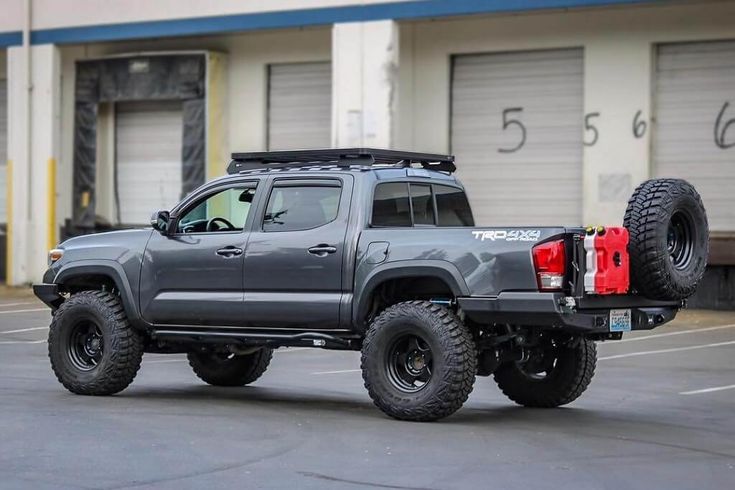 maybe its my age at 83...?
maybe its my age at 83...?
Abelian Trent
what is the mileage of the car and where did you buy the armrest? special thanks for the vids, inquisitive but
2016 Toyota Tacoma Crawl Control 4x4 off-road 4x4 offroad will it sit or not? trunk lid on the SL500? I've seen it on the small Mercedes but not the SL. I would appreciate it.Connolly
Good job, Ross! :-)
?Toyo Open Country M QUICK REVIEW! CIVIL OPTION FOR HARD OFF-ROAD 2020Bicycle Review of bike Head Tacoma 2 ladyDmitro Meteltsev
Wo chota sa computer OBD-II scanner hota hy wo har gari per lag jata hy jo 96 k baad manufacture ... ho
How much 9093 Milina sir for that set up?
Genuine steering wheel heating control button Toyota - NissanSpare tire mounting 2Elmo
Great Video Mark. I did both hub assemblies without having to watch any other videos but yours.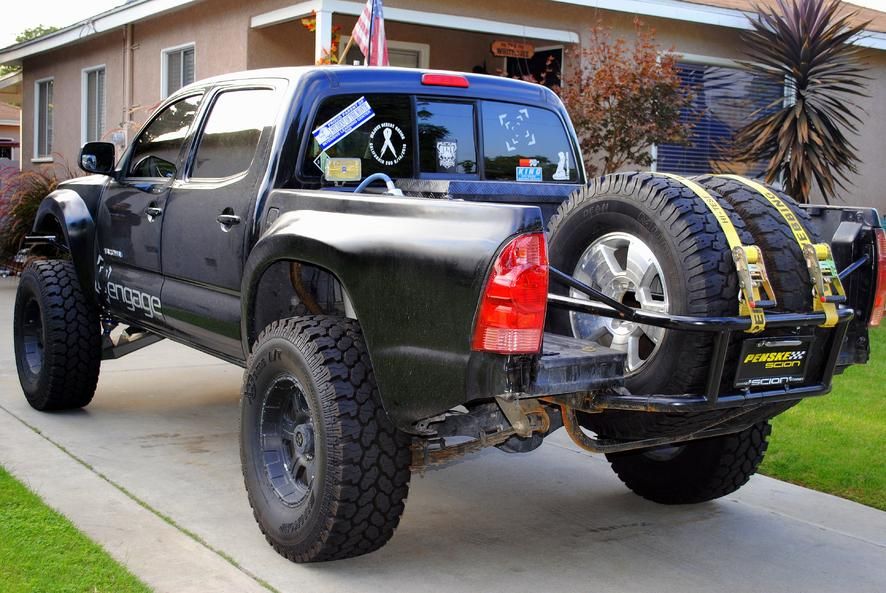 The whole job took about 5 hours as I'm old and slow. While waiting for parts I lubed the nuts and bolts several times a day for a week and that made a big difference. Knowing the ft. lbs. helped. And yes, I too use carb cleaner on a multitude of parts...
The whole job took about 5 hours as I'm old and slow. While waiting for parts I lubed the nuts and bolts several times a day for a week and that made a big difference. Knowing the ft. lbs. helped. And yes, I too use carb cleaner on a multitude of parts...
Katerina
I imagine the tires on that car would be toast too correct? Anything made of rubber will crack and fall apart over time. So bye bye tires, bye bye hoses, bye bye fan belt, etc... You would have a lot of things to replace on a car that hasn't been driven! :(
Toyota Camry 40 stalk steering wheel replacement TOYOTA CAMRY V40 CARDREAM - Upholstery of the car interior with leather!Aldan
Percis macem roda gila dinamo stater
Cuba
Hi how's it gokng? It's astonishkng exercise chubby % 11
B0101 ToyotaToyota HiluxNatalia
You can add - clean the terminals from oxides and protect them with conductive grease.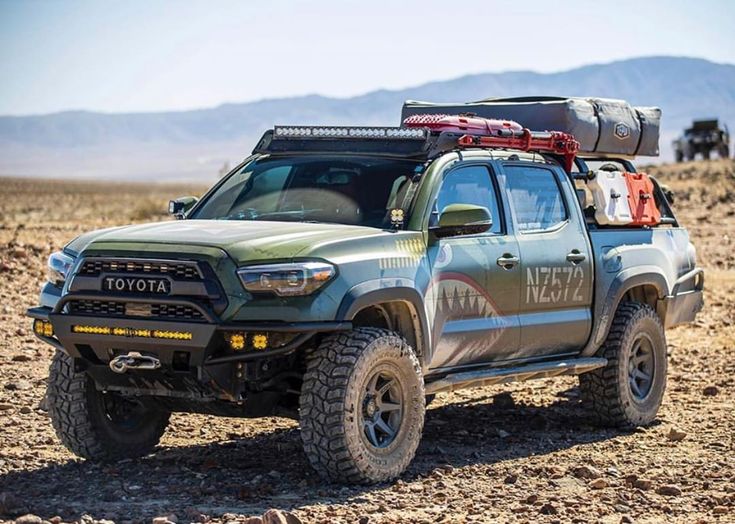
Alvar
brother Replace caliper
Celeste
Is bandy ny new le is leye bs tarefy ker rha. Purani cultus bhot bether hai ac b acha local 15 16 av deti r ac k sath 13.5 long py 19 tk deti hai ac k sath 16.5. Pick ki bat kerta cultus pick k mamly mai bhot bether hai koi v 1000cc us k mukably mai ni hai. Na e garam hoti hai cultus na e nexhy lagti hai kis jahil ko review k leye bulaya jisy kuch b nai pata.
Paula
Worked at KRAZ like that, burst, almost blew ... me. Didn't crush anyone.
Hagen Wavin
The torque spec is 45 ft-lbs according to the Haynes manual.
Mohammed
the concentrate will thicken and there is a table on it, depending on what temperature threshold is needed.
Javid
Here's a fucking asshole in pink pants.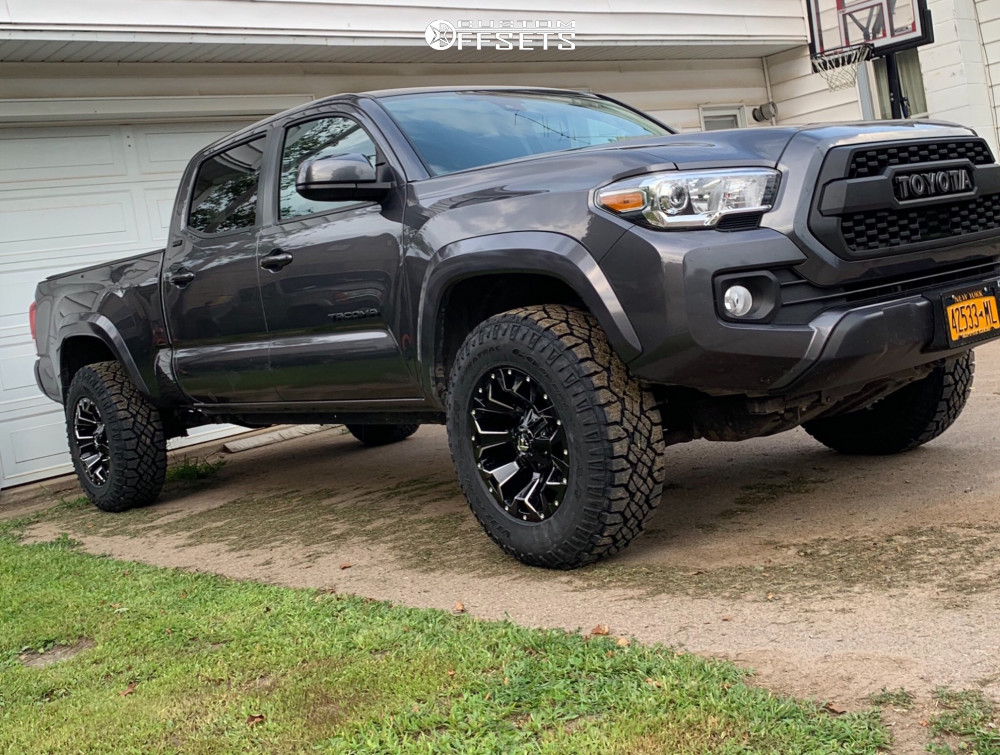 How ... to remember her for life
How ... to remember her for life
Myasnik Minushkin
About a week ago I was driving my car home from work and sat in traffic I noticed that the ABS light came on. The following day it didn't come on until I had been driving it for 10 minutes or so or sat in traffic. I didn't think too much to it as it was still driving fine and thought well if it comes on permanently I might get it looked at. A couple of days later I was driving home from a supermarket and looked down at my speedo and noticed that it wasn’t working. The rev counter was working fine and the car was still driving fine but I was starting to get concerned. That evening I did some research and it came to my attention that this is quite a known common fault. So I booked the car in to have the brake sensors checked at I am quite friendly with the guy who runs the garage so know ill get a professional job at a reasonable price. I got a phone call the following day asking me to come down the garage, its not good news. He said ive checked and replaced the front sensors which has brought the speedo back to life but now the speedo jumps up and down, almost flickering all round the dial which confusions the gearbox as it has no idea which gear to select. Sometimes over revving which isn't very good for the engine. He said I didn't change the rear sensors as the diagnostics weren't able to receive a signal from the rear sensors, which highlights a problem somewhere?? He did say it would be extremely unlikely for them both to have gone at the same time. The ABS light is now flashing and staying on quite a lot. So, the garage has turned round and said he uses a delph diagnostic system which can only go so far and that perhaps a Vauxhall one might be able to locate the problem more specifically. Also he thinks a problem with the ABS pump might be causing it (not cheap) or the pump ECU. But he really isn’t sure and doesn’t want to just start swapping parts over and make this very expensive and not necessarily fix the problem.
He said ive checked and replaced the front sensors which has brought the speedo back to life but now the speedo jumps up and down, almost flickering all round the dial which confusions the gearbox as it has no idea which gear to select. Sometimes over revving which isn't very good for the engine. He said I didn't change the rear sensors as the diagnostics weren't able to receive a signal from the rear sensors, which highlights a problem somewhere?? He did say it would be extremely unlikely for them both to have gone at the same time. The ABS light is now flashing and staying on quite a lot. So, the garage has turned round and said he uses a delph diagnostic system which can only go so far and that perhaps a Vauxhall one might be able to locate the problem more specifically. Also he thinks a problem with the ABS pump might be causing it (not cheap) or the pump ECU. But he really isn’t sure and doesn’t want to just start swapping parts over and make this very expensive and not necessarily fix the problem.